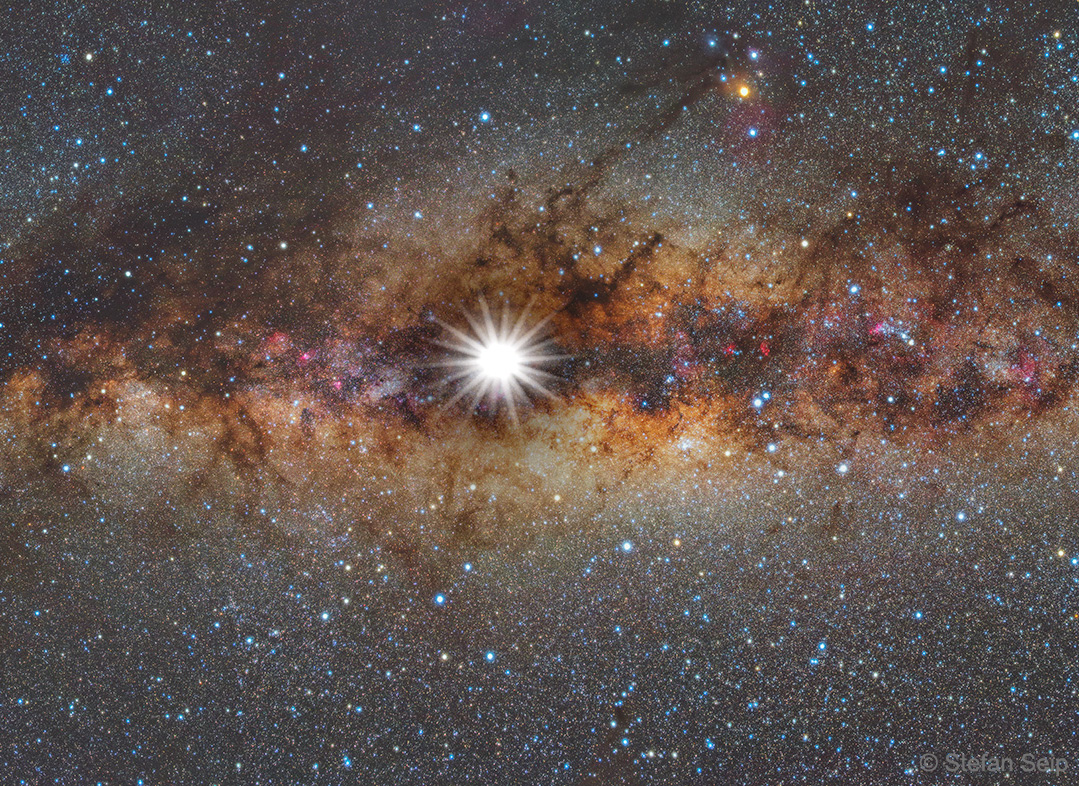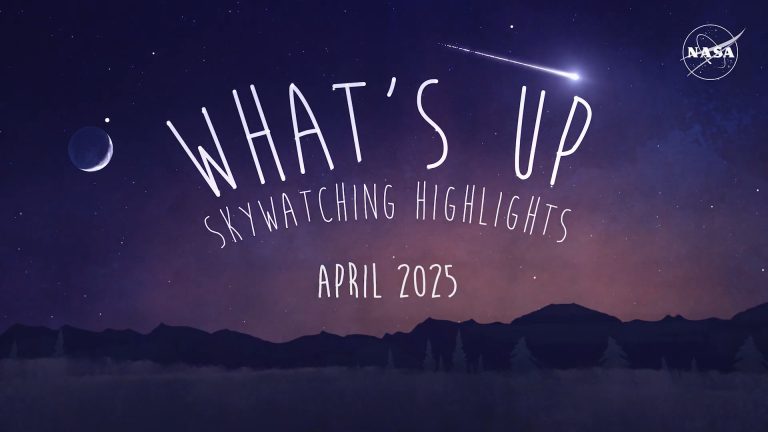2021年12月21日
Solstice Sun and Milky Way
Composite Image Credit & Copyright: Stefan Seip (TWAN)
Explanation: Welcome to December’s solstice, first day of winter in the north and summer for the southern hemisphere. Astronomical markers of the seasons, solstice and equinox dates are based on the Sun’s place in its annual journey along the ecliptic, through planet Earth’s sky. At this solstice, the Sun reaches its maximum southern declination of -23.5 degrees today at 15:59 UTC, while its right ascension coordinate on the celestial sphere is 18 hours. That puts the Sun in the constellation Sagittarius in a direction near the center of our Milky Way galaxy. In fact, if you could see today’s Solstice Sun against faint background stars and nebulae (that’s really hard to do, especially in the daytime …) your view might look something like this composited panorama. To make it, images of our fair galaxy were taken under dark Namibian night skies, then stitched together in a panoramic view. From a snapshot made on 2015 December 21, the Sun was digitally overlayed as a brilliant star at today’s northern winter solstice position, close to the center of the Milky Way.
Discovery + Outreach: Graduate student research position open for APOD
Tomorrow’s picture: X launch
冬至的太阳与银河
组合影像提供与版权: Stefan Seip (TWAN)
说明: 今天是欢渡冬至的日子,也是北半球冬季的第一天,及南半球夏季的头一天。在天文学里,作为季节标记的至点与分点,是根据太阳每年在黄道的旅程中,于地球天空的位置来定义的。在今年的冬至之时,太阳于世界时15:59来到它在赤纬最南的位置-23.5度,而它在天球的赤经则是18时。此时的太阳位在人马座内,方位上很接近银河系的中心。事实上,如果你能看到冬至的太阳位在昏暗背景恒星和星云前方的话(难度极高,特别是在白天…),你所见到的景观,可能如上面这幅组合全景影像所示。为了组合出这张影像,先使用多张摄于纳米比亚幽暗天空下的美丽银河照片,拼接出全景底图。然后把2015年12月21日拍摄的太阳,以明亮恒星之姿,数位叠合在今天北半球冬至、很靠近银河系中心的位置。
发现+外展: APOD的研究生研究职位空缺
明日的图片: X launch







